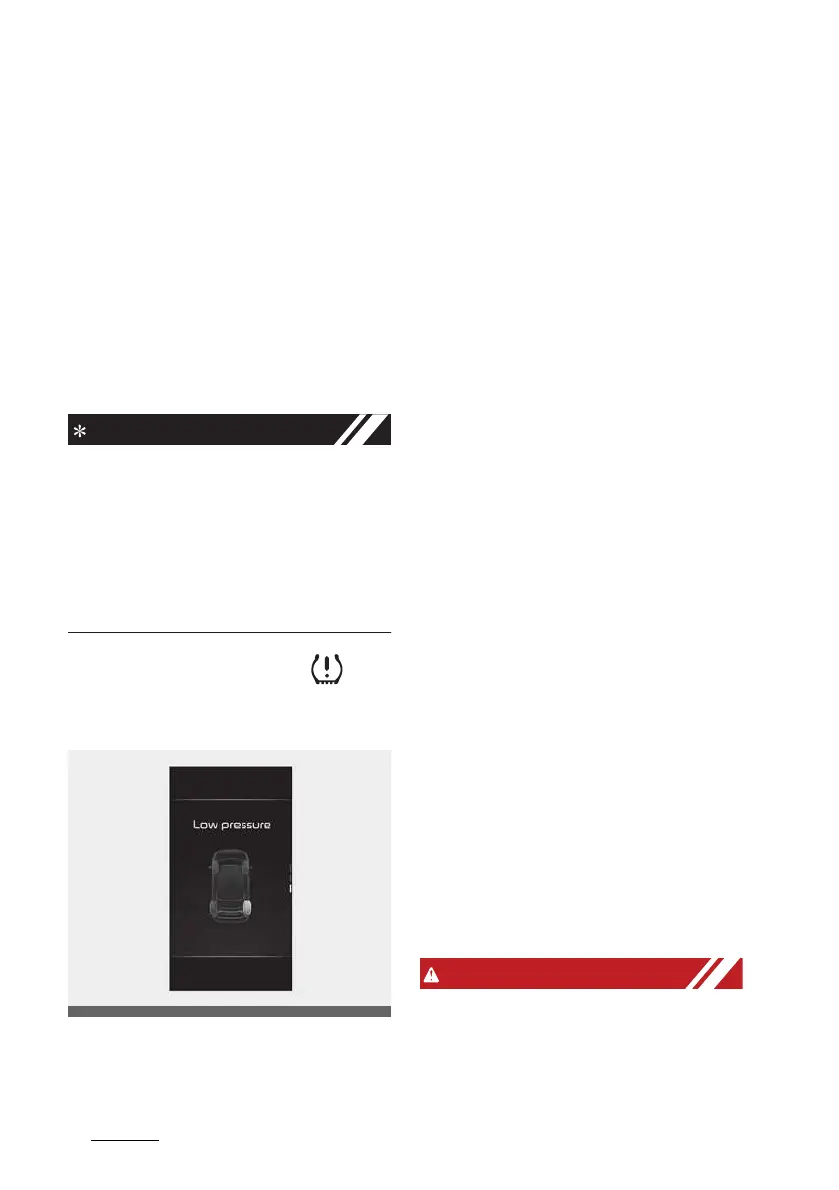What to do in an emergency
126
Tire Pressure Monitoring System (TPMS – Type B)
may not be able to detect or signal low
tire pressure as intended. TPMS mal
-
functions may occur for a variety of rea
-
sons, including the installation of
replacement or alternate tires or wheels
on the vehicle that prevent the TPMS
from functioning properly.
Always check the TPMS malfunction tell
-
tale after replacing one or more tires or
wheels on your vehicle to ensure that
the replacement or alternate tires and
wheels allow the TPMS to continue to
function properly.
If the TPMS, Low Tire Pressure indicator
does not illuminate for 3 seconds when
the ignition switch is turned to the ON
position or engine is running, or if they
remain illuminated after coming on for
approximately 3 seconds, take your
vehicle to your nearest authorized Kia
deal-er and have the system checked.
Low tire pressure telltale
Low tire pressure position telltale
When the tire pressure monitoring sys
-
tem warning indicators are illuminated,
one or more of your tires is significantly
under-inflated.
If the telltale illuminates, immediately
reduce your speed, avoid hard cornering
and anticipate increased stopping dis
-
tances. You should stop and check your
tires as soon as possible.
Inflate the tires to the proper pressure as
indicated on the vehicle’s placard or tire
inflation pressure label located on the
driver’s side center pillar outer panel. If
you cannot reach a service station or if
the tire cannot hold the newly added air,
replace the low pressure tire with the
spare tire.
Then the TPMS malfunction indicator
and the Low Tire Pressure telltale may
turn on and illuminate after restarting
and about 20 minutes of continuous
driving before you have the low pres
-
sure tire repaired and replaced on the
vehicle.
In winter or cold weather, the low tire
pressure telltale may be illuminated if
the tire pressure was adjusted to the rec
-
ommended tire inflation pressure in
warm weather. It does not mean your
TPMS is malfunctioning because the
decreased temperature leads to a pro
-
portional lowering of tire pressure.
When you drive your vehicle from a
warm area to a cold area or from a cold
area to a warm area, or the outside tem
-
perature is greatly higher or lower, you
should check the tire inflation pressure
and adjust the tires to the recommended
tire inflation pressure.
Low pressure damage
Do not drive on low pressure tires. Sig
-
nificantly low tire pressure can cause the
tires to overheat and fail making the
vehicle unstable resulting in increased

